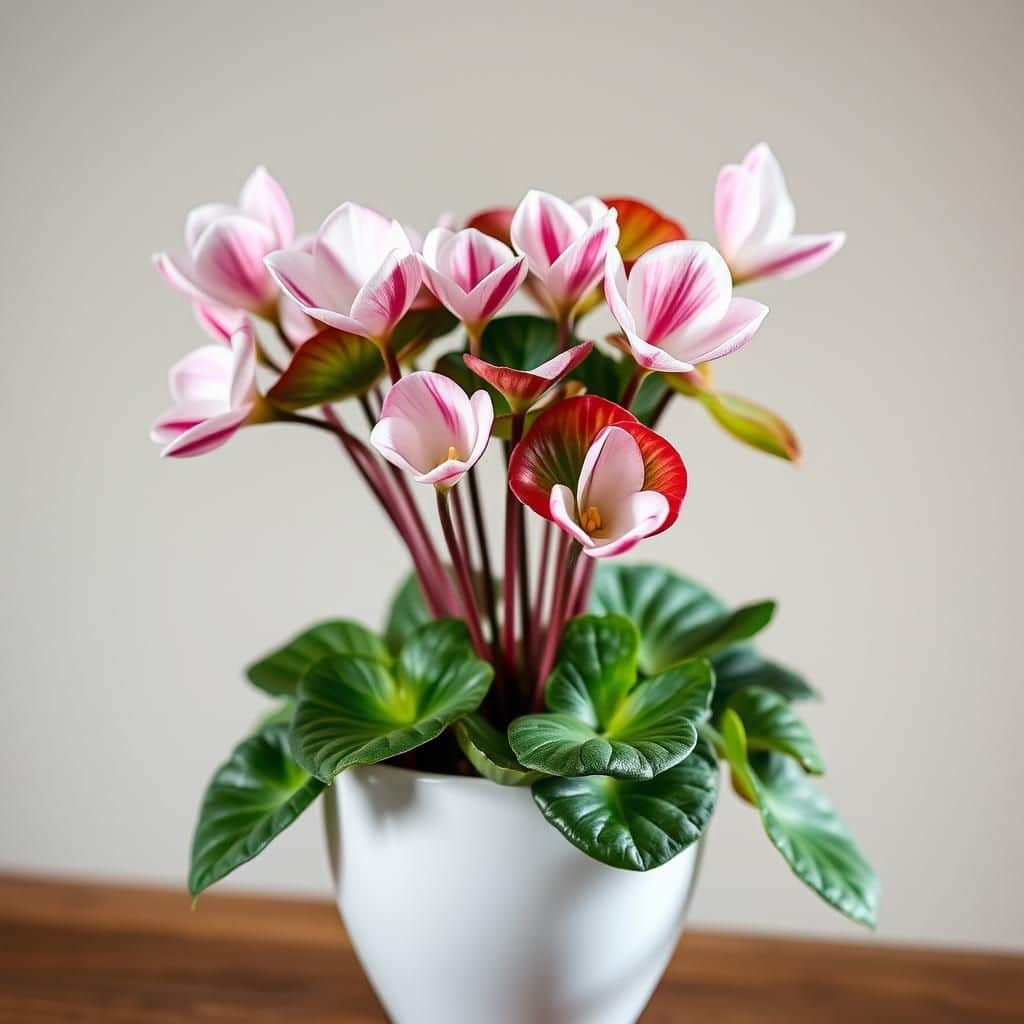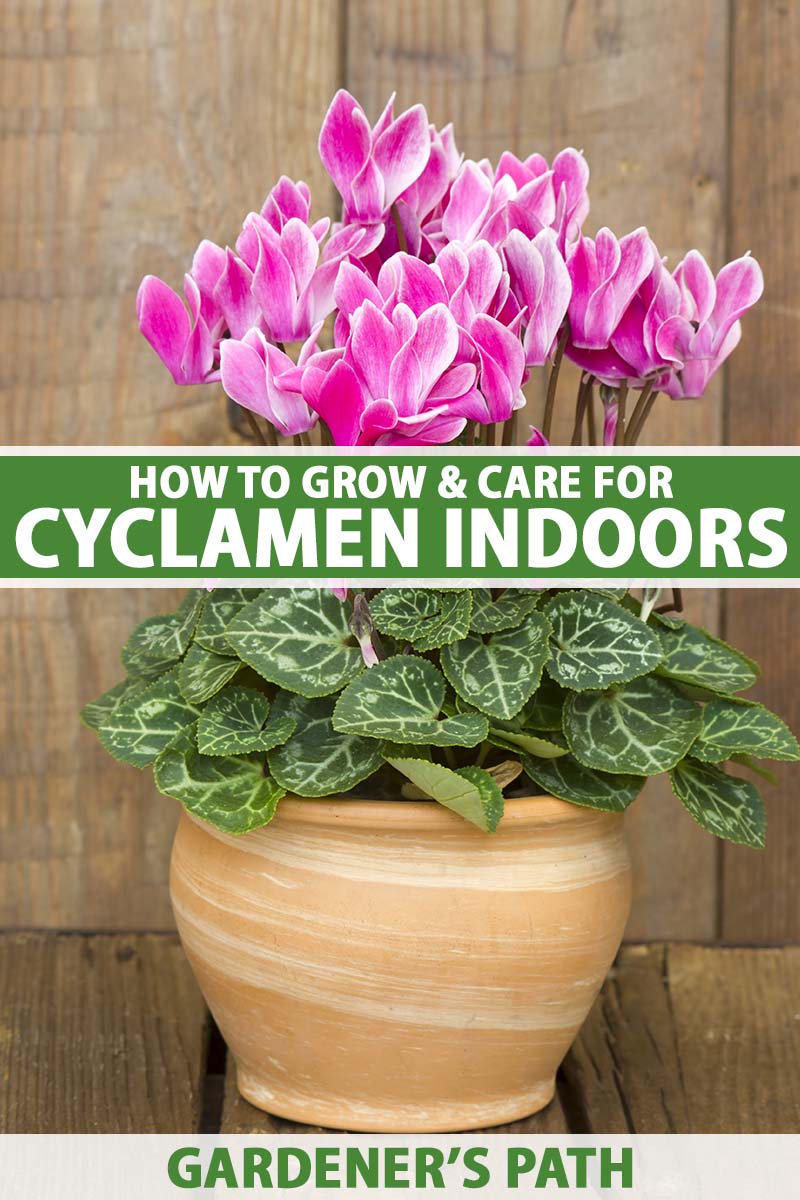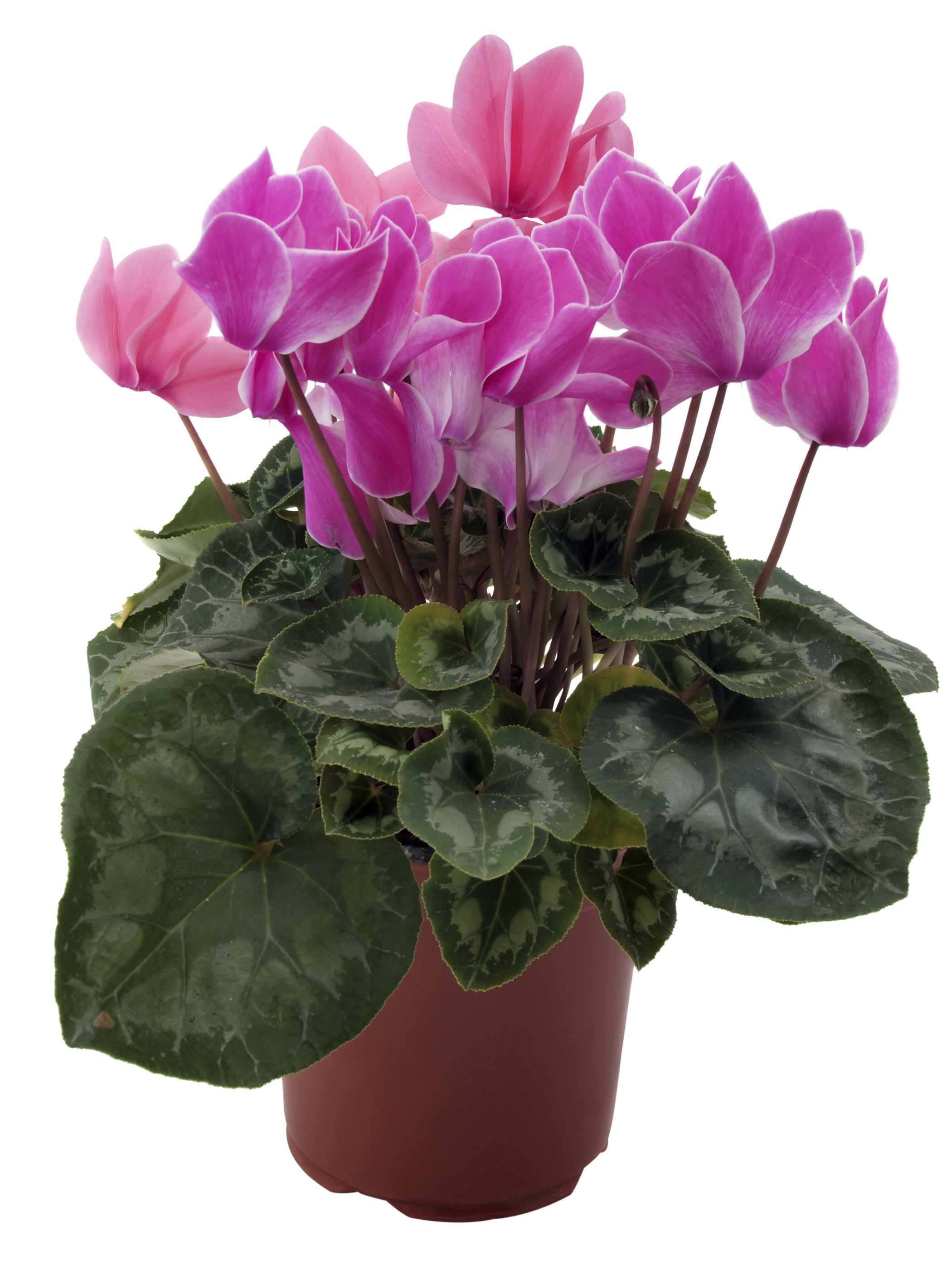Ultimate Guide to Care for Cyclamen Plant Indoors: Tips for Thriving Growth

Cyclamen plants are a popular choice for indoor gardening enthusiasts due to their vibrant blooms and unique foliage. However, caring for these delicate plants can be challenging without the right knowledge. This ultimate guide will provide you with essential tips and techniques to ensure your cyclamen thrives indoors. From optimal lighting conditions to proper watering and temperature requirements, we will cover everything you need to know to create a healthy environment for your cyclamen. Whether you’re a seasoned gardener or a beginner, these insights will help you enjoy the beauty of this enchanting plant all year round.
Care Tips for Cyclamen Plants Indoors
To successfully care for a cyclamen plant indoors, it is essential to recreate its preferred environment, which includes providing adequate light, moisture, and temperature. These beautiful flowering plants thrive in cooler conditions, ideally between 50-65°F (10-18°C), and they prefer bright, indirect light. Watering should be done carefully, allowing the soil to dry out between waterings to avoid rotting the tuber, but maintaining consistent humidity is crucial. Cyclamens benefit from well-draining potting soil and should be fertilized sparingly during their active growing season, generally from late fall through early spring, to promote healthy blooms.
Light Requirements
Cyclamen plants demand bright but indirect light for optimal growth. Placing them near a window with filtered sunlight is ideal, as direct sun can scorch their delicate leaves and impede blooming. If you notice the leaves stretching towards the light source, it may indicate that the plant needs more light, while excessive leaf drop could suggest it's receiving too much direct sunlight.
Watering Guidelines
Proper watering technique is crucial for cyclamen's health. The soil should be kept consistently moist but not soggy; overwatering can lead to tuber rot. It's advisable to water the plant from the bottom by placing the pot in a tray of water for about 30 minutes, allowing the soil to absorb moisture, then draining excess water. Always check the top layer of soil before watering to ensure it is dry.
Temperature and Humidity Needs
Cyclamen prefer a cooler climate, with ideal temperatures ranging from 50-65°F (10-18°C). They do not tolerate heat well and can suffer if exposed to temperatures above 70°F (21°C). Additionally, maintaining a level of humidity around the plant supports its wellbeing. If the air is too dry, consider misting the plant or using a pebble tray with water to increase the surrounding humidity.
Soil Type
Choosing the right soil is vital for cyclamen plants. A well-draining mix that includes peat moss, perlite, and a bit of compost works best. This helps prevent water retention, which could lead to tuber rot. Ensure that the pot has drainage holes to encourage excess moisture to escape, reducing the risk of overwatering.
Fertilization Tips
During the active growth phase, it's essential to fertilize cyclamen plants with a balanced liquid fertilizer diluted to half strength every 4-6 weeks. However, it’s important to withhold fertilization during dormancy, typically in the summer, as the plant needs a rest period to store energy for the next blooming cycle. Over-fertilizing can lead to leaf burn and poor growth.
| Aspect | Recommendations |
|---|---|
| Light | Bright, indirect light |
| Watering | Allow soil to dry between waterings |
| Temperature | 50-65°F (10-18°C) |
| Soil | Well-draining potting mix |
| Fertilization | Balanced fertilizer during active growth |
How long does a potted cyclamen last?

A potted cyclamen can last anywhere from 3 to 6 months under optimal conditions, depending on several factors including the species of cyclamen, care provided, and environmental conditions. These popular flowering plants are known for their vibrant, delicate blooms and attractive foliage, which can make them a beautiful addition to any home or garden.
Factors Affecting the Lifespan of Potted Cyclamen
The vitality and longevity of potted cyclamen can be influenced by various factors:
- Watering: Overwatering or underwatering can significantly affect the health of the plant.
- Temperature: Cyclamen prefer cooler temperatures, ideally between 50°F to 65°F (10°C to 18°C).
- Light Levels: They thrive in bright, indirect sunlight but can suffer in excessive direct sunlight.
Proper Care for Extending Flowering Period
To enhance the lifespan and flowering duration of your cyclamen, proper care is essential:
- Fertilization: Use a balanced, water-soluble fertilizer every 4-6 weeks during the growing season.
- Temperature Management: Keep the plant away from heat sources and ensure a conducive growing environment.
- Pruning: Regularly remove dead or yellowing leaves to improve air circulation and overall plant health.
Signs of a Healthy Cyclamen
Observing the health of your potted cyclamen can indicate how long it may last:
- Vibrant Blooms: Healthy cyclamen will showcase plenty of colorful flowers without wilting.
- Firm Leaves: The leaves should be firm and green, indicating good health.
- Root System: A robust root system is essential; inspect for healthy growth and avoid rot.
Common Problems and Solutions
There are a few issues that may arise that can affect the lifespan of cyclamen:
See also:
- Pest Infestation: Aphids or spider mites can weaken the plant. Consider using insecticidal soap.
- Overwatering: This can lead to root rot; ensure that the pot has proper drainage.
- Environmental Stress: Sudden changes in temperature or light can shock the plant; try to maintain a stable environment.
When to Expect Dormancy
After the flowering period, potted cyclamen often enter a dormant phase:
- Signs of Dormancy: Leaves may turn yellow and fall off, which is normal.
- Care During Dormancy: Reduce watering and stop fertilizing until new growth appears.
- Duration of Dormancy: This phase can last several months, typically from late spring to early fall.
How do you keep indoor cyclamen alive?

Keeping indoor cyclamen alive involves understanding its specific needs, including light, water, and temperature. This delicate plant requires the right conditions to thrive, and by following some essential care guidelines, you can enjoy its beautiful blooms for an extended period.
Light Requirements
Cyclamen thrives in bright, but indirect light. Too much direct sunlight can scorch the leaves and flowers, while too little light may inhibit growth. To provide ideal lighting conditions, consider the following:
- Place the cyclamen near a north or east-facing window.
- Avoid exposure to harsh midday sun; use drapes or sheer curtains as a filter.
- If natural light is insufficient, consider using grow lights to supplement.
Watering Techniques
Proper watering is crucial for the health of your indoor cyclamen. Overwatering or underwatering can lead to root rot or dehydration. Here are some watering tips:
- Water the plant when the top inch of soil feels dry to the touch.
- Use room temperature water and avoid getting water on the leaves and tuber.
- Ensure the pot has drainage holes to allow excess water to escape.
Temperature and Humidity Needs
Cyclamen prefers cooler temperatures and specific humidity levels. Maintaining the right environment will help keep your plant healthy:
- Keep the indoor temperature between 60°F to 70°F during the day and cooler at night.
- Avoid placing it near heaters, air conditioning vents, or drafty windows.
- Maintain humidity by using a humidifier or by placing a tray of water nearby.
Fertilizing Schedule
While cyclamen does not need frequent fertilization, providing the right nutrients can enhance its growth and flowering:
- Use a balanced, water-soluble fertilizer every 4-6 weeks during the growing season.
- Reduce or eliminate fertilization during the dormant period after blooming.
- Follow the manufacturer's instructions to avoid over-fertilizing.
Repotting and Soil Type
Proper repotting practices and soil selection are essential for the longevity of your cyclamen plant:
- Choose a well-draining potting mix specifically formulated for bulb plants.
- Repot the cyclamen every 1-2 years or when it outgrows its container.
- Ensure the pot is slightly larger than the previous one to allow for growth.
How do you care for a potted cyclamen?

To care for a potted cyclamen, it is essential to understand the specific needs of this beautiful plant. Cyclamen thrive in cooler temperatures and require proper moisture levels. Here’s a detailed guide on maintaining a healthy cyclamen plant.
Understanding Cyclamen's Environment
Cyclamen prefer a cool and bright environment. Ideal temperatures range from 50°F to 65°F (10°C to 18°C). Too much heat can lead to wilting and a reduced lifespan of the plant. Providing adequate light is equally important, as cyclamen flourish in indirect sunlight. Here are key environmental factors to consider:
- Keep the plant away from direct sunlight, which can scorch the leaves.
- Avoid placing cyclamen near heat sources like radiators or heaters.
- Ensure good air circulation around the plant to prevent rot and disease.
Watering Techniques
Proper watering is crucial for the health of a cyclamen. Overwatering can lead to root rot, while underwatering can cause the plant to dry out. Understanding the accurate watering technique is vital for maintaining an optimal moisture level. Follow these steps:
- Water the plant when the top inch of soil feels dry to the touch.
- Always water at the base of the plant to prevent damaging the leaves.
- Ensure the pot has adequate drainage holes to allow excess water to escape.
Fertilizing Cyclamen
Fertilizing your cyclamen helps support its growth, especially during its active growth phase. The right type of fertilizer and the timing of application are essential for beneficial results. Here's how to properly fertilize your cyclamen:
See also:
- Use a balanced fertilizer (such as 15-15-15) diluted to half strength.
- Apply fertilizer every 4 to 6 weeks during the growing season, typically from late summer to early spring.
- Do not fertilize during the dormant period (late spring to summer) when the plant is not actively growing.
Pest and Disease Management
Like any houseplant, cyclamen can be susceptible to pests such as aphids, spider mites, and mealybugs. It is crucial to monitor the plant regularly for signs of infestation or disease. Effective management includes:
- Inspect the leaves and stems regularly for any signs of pest infestation.
- Use a gentle insecticidal soap or neem oil to treat affected areas.
- Ensure proper airflow and avoid overcrowding to minimize the risk of fungal diseases.
Pruning and Maintenance
Regular maintenance and pruning help keep your cyclamen in top condition and can promote healthier growth. It's important to know how and when to prune your plant:
- Remove any yellowed or dead leaves to improve air circulation and encourage new growth.
- After the blooming period, trim back the flower stalks close to the base of the plant.
- To encourage future blooms, allow the plant to rest after the flowering period by reducing watering.
How do I get my cyclamen to rebloom?
To encourage your cyclamen to rebloom, it’s important to understand its growing conditions and care requirements, especially after the blooming period ends. Cyclamen typically go through a resting phase, and proper care can help stimulate new blooms.
Understanding Cyclamen's Life Cycle
Cyclamen plants have a distinct life cycle that includes a dormancy period, typically after they finish blooming. During this time, the plant gathers energy for the next blooming cycle. To ensure your cyclamen has the best chance of reblooming, it’s essential to recognize the stages it goes through and provide suitable conditions.
- Active Growth Phase: This is when cyclamen produces leaves and flowers.
- Resting Phase: After blooming, the plant will enter dormancy, usually in the summer, shedding leaves.
- Reblooming Phase: When conditions are right, the plant will produce new flowers in fall or winter.
Optimal Watering Practices
Proper watering is crucial in ensuring your cyclamen is healthy enough to rebloom. Over or under-watering can stress the plant and hinder its ability to flower again.
- Watering Schedule: Water the plant when the soil feels dry to the touch, but avoid letting it completely dry out.
- Drainage: Ensure that the pot has adequate drainage to prevent root rot.
- Water Quality: Use room temperature water and avoid overly cold or chlorinated water.
Lighting Conditions
The amount and quality of light your cyclamen receives play a significant role in its ability to rebloom. Cyclamen prefer bright, indirect sunlight, which mimics their natural habitat.
- Location: Place your cyclamen near a window with filtered light, avoiding direct sunlight.
- Artificial Lighting: If natural light is insufficient, consider using grow lights during shorter days.
- Rotate the Plant: Periodically rotate the plant to ensure an even distribution of light, preventing leaning.
Fertilization Techniques
Regular fertilization can help provide the necessary nutrients your cyclamen needs for new growth and flowers. However, the timing and type of fertilizer must be appropriate.
- Type of Fertilizer: A balanced, water-soluble fertilizer at half-strength works well during the growing season.
- Frequency: Fertilize every 4-6 weeks while the plant is actively growing.
- Paused Feeding: Avoid fertilizing during the dormancy phase to prevent any stress on the plant.
Temperature and Humidity Requirements
The right temperature and humidity levels can significantly affect a cyclamen's reblooming process. Cyclamen prefer cooler temperatures, ideally ranging between 60°F to 70°F (15°C to 21°C).
- Ideal Temperature: Maintain a consistent temperature, avoiding hot drafts from heaters or air conditioning.
- Humidity Levels: Cyclamen thrive in moderate humidity; consider placing a humidifier nearby or using pebble trays.
- Seasonal Adjustments: Monitor and adjust the environment during seasonal changes, ensuring comfort for the plant.
Questions from Our Readers
How often should I water my cyclamen plant indoors?
To keep your cyclamen plant healthy, it's important to water it properly. Typically, you should water the plant when the top inch of soil feels dry, usually every 1 to 2 weeks. Make sure not to overwater, as this can lead to root rot.
What type of light does a cyclamen plant need indoors?
Cyclamen plants prefer bright, indirect light. Too much direct sunlight can scorch the leaves, while too little light may hinder their growth and flowering. Placing your cyclamen near a north or east-facing window is often ideal.
What temperature is best for cyclamen plants indoors?
Cyclamen thrive in cooler temperatures, ideally between 60°F to 70°F (15°C to 21°C) during the day and slightly cooler at night. Keeping the plant in a draft-free area away from heating vents can help maintain the proper temperature.
How can I encourage blooming in my indoor cyclamen?
To encourage your cyclamen to bloom, provide it with an appropriate light, consistent watering, and adequate nutrition. Consider applying a balanced fertilizer every few weeks during the growing season, but be sure to reduce feeding when the plant goes dormant.
See also:

If you want to read more articles like Ultimate Guide to Care for Cyclamen Plant Indoors: Tips for Thriving Growth, we recommend you check out our Pots category.
Leave a Reply
Related Articles